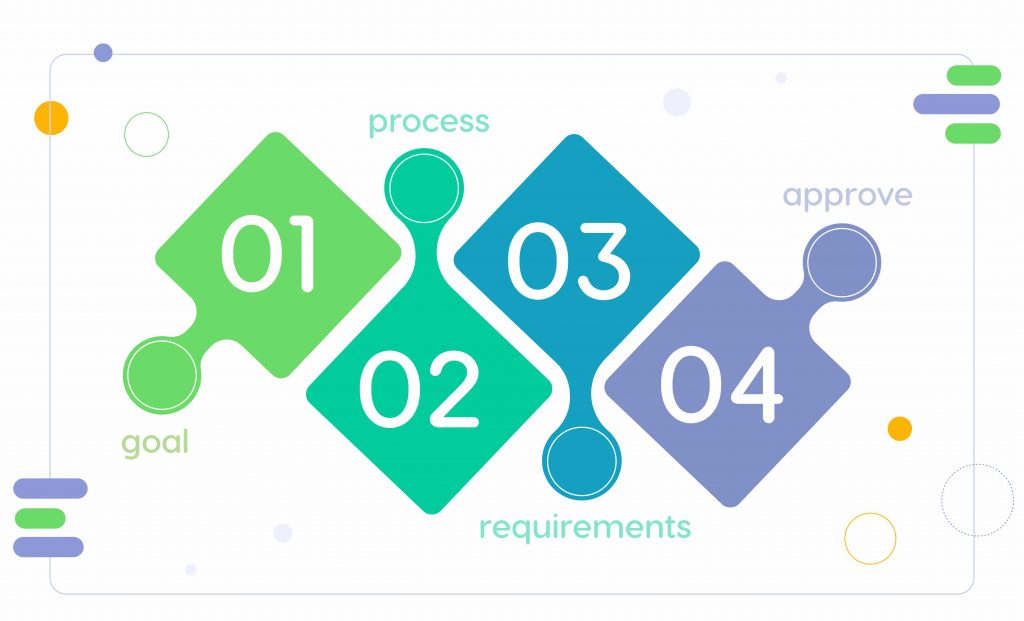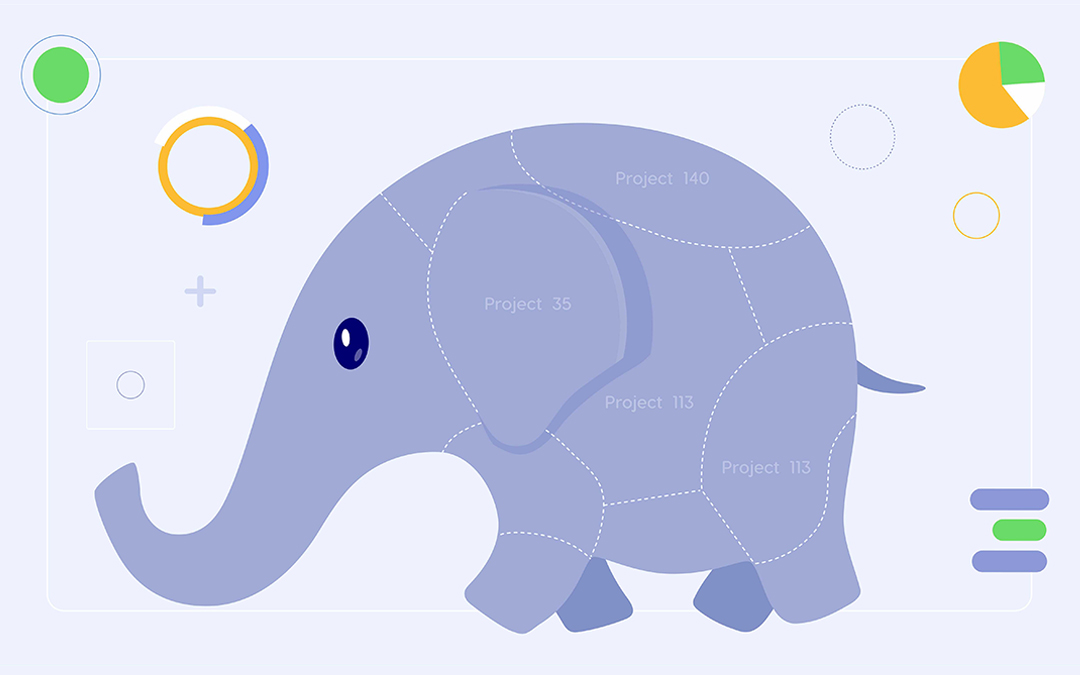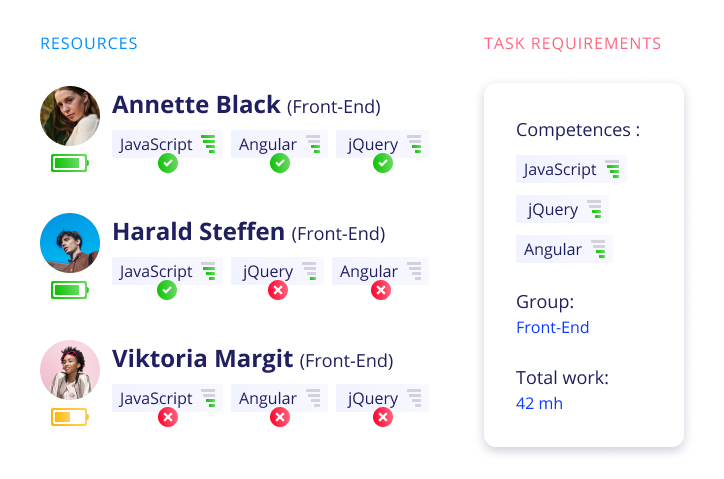The same is with project work – the final outcome should be divided into smaller pieces of work (deliverables), each of which will contribute to achieving the end project goal. Read further to get a full picture of project deliverables, and learn how to identify and manage them efficiently.
Project Deliverables: Essence and Importance
A project deliverable refers to the output obtained upon completion of a project (or a particular piece of work) – a product, a service, or a capability. To be considered a deliverable, the project output should meet the following requirements:
- it’s the result of purposeful activity;
- it’s agreed with all project stakeholders;
- it fits into the baselined project scope;
- it has a specific role in achieving the final project goal.
Project deliverables fall into the following categories.
- They can be tangible or intangible: e.g., a tangible deliverable involves adding a helpful feature to a product; while increasing customer satisfaction is the intangible one.
- Also, they can relate to a product or a process: the product deliverables refer to the final project output (a product, service, capability) and are client-oriented, while the process deliverables denote interim results that help achieve the product deliverable and are essential for stakeholders.
Project deliverables aren’t the same as milestones, though they both refer to a particular result of work. While a deliverable is the output of project activities, a milestone indicates a checkpoint in the project flow: e.g., the completion of a critical task, the end of a project phase, etc. Milestones aren’t components of project objectives but serve as a tool for tracking project progress.
Why is it important to identify deliverables?
Determining deliverables in project management is essential for the following reasons.
- It allows project team members to see a comprehensive picture of the project scope they need to accomplish.
- It breaks down a project goal into smaller components, which makes project work more manageable.
- Identifying deliverables and tracking their completion makes it easier for stakeholders and clients to understand how the project progresses.
- Project deliverables become components of a work breakdown structure – a visual representation of the project scope, which is the input for further project processes.
Finally, the deliverables form a “skeleton” for the project work and provide a clear understanding of how to achieve project goals and objectives. [1]
Now, let’s examine the process of determining project deliverables.

Identifying Project Deliverables: 4 Steps to Follow
To ensure the achievement of the final project goal, you should determine the interim deliverables, gather requirements for them, and ensure their completion. Let’s review these steps in more detail.
Step 1. Start from the project goal.
If you’ve created a work breakdown structure of your project scope, you will find the main deliverables in it. If not, go backward from the final result you expect to achieve upon project completion (the final deliverable) and break it down into smaller components. The following information will help you do that:
- what should be achieved upon project completion (what customers want);
- the integral parts of the final output;
- the importance of each piece for achieving the project goal;
- the cost and time required for completing each part.
Step 2. Identify requirements for each deliverable.
This step aims to determine what will make the deliverable acceptable to stakeholders. Requirements should be as accurate as possible – ambiguity can lead to rework, delay, and budget overrun. The following points should be considered when determining the demands:
- the key stakeholders who will approve the deliverable and their expectations regarding it;
- whether these requirements fit into the approved project scope and budget;
- historical data on similar deliverables (if available);
- the industry standard for this kind of deliverables;
- quality criteria for this deliverable.
Remember that requirements can (and will) change as the project progresses, but you should manage them to avoid scope creep.
Read more: Changing Requirements in Project Management: How to Stay on Track
Step 3. Determine process deliverables.
As we’ve mentioned earlier, process deliverables help complete project deliverables, so they need to be identified, too. Project management documents (e.g., a project management plan) are examples of process deliverables. When determining them, you need to decide on the following things:
- what process deliverables are required to complete the final one;
- employees responsible for completing each process deliverable;
- ways of their tracking and management;
- timelines for completing process deliverables;
- stakeholders who will approve them.
Step 4. Approve the deliverables.
As soon as all the would-be achievements are determined, they should be approved by corresponding stakeholders. After that, the project team members should familiarize themselves with all deliverables and requirements for them as well as change control process to know how to deal with change requests.
Now, let’s consider how to ensure the completion of deliverables, and what role a software tool plays in their management.
Handling Project Deliverables: How a Resource Management Solution Helps
As project deliverables have been determined and the team members have started work, a project manager needs to keep track of all these activities to ensure their successful completion. Achieving good results becomes possible thanks to assigning tasks to the right people, prioritizing project activities, identifying risks and problems, and more.
When there are multiple projects running in a company, all of these deliverables can turn into a mess, and ensuring their successful completion will become extremely challenging. The right software solution can help a project manager clear things up. Let’s review the capabilities of Epicflow to get a better understanding of how a resource management tool helps manage deliverables and ensure their successful completion.
Epicflow is a multi-project resource management solution that contributes to the efficient utilization of shared resources in a multi-project environment and the delivery of all initiatives in the portfolio. How does it help manage project deliverables?
Clear workflow organization
- In Epicflow, project work is divided into phases (sprints and releases); logically related tasks are grouped into summaries.
- You can set milestones that will help track project performance.
- Resources working in the same domain are united into resource groups.
- Epicflow focuses your attention on highest priority initiatives and tasks.
Task management
Successful accomplishment of project tasks is the basis for completing a deliverable. But when there is a pile of tasks belonging to different projects, it’s impossible for each member to define the most important ones at their own discretion. Epicflow’s prioritization mechanism will help each resource (as well as a resource group) understand the order of completing their assignments, starting from the one with the highest priority.
Resource management
Here are some capabilities of Epicflow’s resource management features:
- It balances employees’ workload: the Future Load Graph predicts both overload and idleness so that a project manager can adjust the workload to ensure smooth workflow across all projects in the portfolio.
- It helps manage team members’ competences: add, edit, and remove them, and use this data for efficient resource allocation.
- It helps assign the right people to the right tasks based on their capacity, availability, and competences.
Tracking progress
Epicflow makes it possible to track project progress and resource performance so that a project manager and stakeholders can be aware of each project’s and the whole portfolio’s “health”. If there are problems in the workflow, Epicflow will show their causes.
Testing project management decisions
Making the right decision is challenging when you don’t know exactly what consequences it will have. But with Epicflow’s What-if Analysis, you can try out different changes to the project environment, analyze their impact, and choose the most reasonable option.
This list isn’t exhaustive, and Epicflow has much more features to offer for seamless project orchestration and efficient resource management. Learn more about its capabilities by scheduling a demo with our specialist.
References
- What Are Project Deliverables? Complete Guide. Retrieved from: https://www.knowledgehut.com/blog/project-management/what-are-deliverables-for-project


